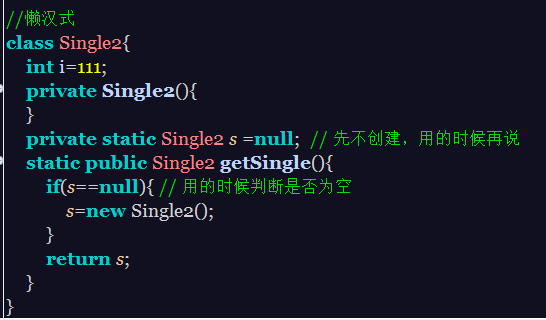- 软件设计模式又称为设计模式,是一套被反复利用、经过分类边牧的、代码设计经验的总结
- 使用设计模式是为了可重用代码,让代码更容易的被人理解,保证代码的可靠性、程序的重用性
- Java中有23种设计模式,常见的设计模式有:单例设计模式、工厂模式、代理模式、策略模式、委托模式、责任链模式等
单例设计模式
概念
单例模式可以说是大多数开发人员在实际中使用最多的,常见的Spring默认创建的bean就是单例模式的。单例模式有很多好处,比如可节约系统内存空间,控制资源的使用。其中单例模式最重要的是确保对象只有一个。
简单来说,保证一个类在内存中的对象就一个。
RunTime就是典型的单例设计,我们通过对RunTime类的分析,一窥究竟。
源码剖析
/**
* Every Java application has a single instance of class
*< code>Runtime</code> that allows the application to interface with
* the environment in which the application is running. The current
* runtime can be obtained from the <code>getRuntime</code> method.
*< p>
* An application cannot create its own instance of this class.
*
* @author unascribed
* @see java.lang.Runtime#getRuntime()
* @since JDK1.0
*/
RunTime.java
package java.lang;
public class Runtime {
//1、创建静态的全局唯一的对象
private static Runtime currentRuntime = new Runtime();
//2、私有构造方法,不让外部来调用
/** Don't let anyone else instantiate this class */
private Runtime() {}
//3、通过自定义的静态方法获取实例
public static Runtime getRuntime() {
return currentRuntime;
}
}
分类

饿汉式

懒汉式
